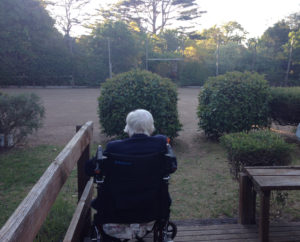Religious, community-based and charitable organisations were once the main providers of residential aged care in Australia. Families could feel reasonably secure that while standards of care would vary, aged care facilities were not motivated by profit. During the past decade, privately owned aged care facilities have grown at twice the rate of those in the non-profit sector. Publicly listed companies are now the fastest growing owners of aged care facilities.
Earlier this year, Bentleys Chartered Accountants reported that profits in the aged care industry rose significantly. Despite the small sample (only 179 aged care homes), their report estimated that net profits jumped 159% in 2015, from $4.14 to $10.71 per resident per day.
The growth in the aged care industry is underpinned not only by our ageing population but also government subsidies. Major aged-care providers such as BUPA, Japara, Regius and Estia receive substantial government subsidies. Estia, for example, received a 10.9% increase in government subsidies during last financial year.
The changes to Aged Care Funding Instrument (ACFI) announced in the recent budget are intended to help curb a predicted $3.8 billion blowout in government subsidies. The changes will save the government $1.2 billion.
The peak bodies that represent providers of residential aged care – Leading Aged Services Australia (LASA), Aged and Community Services Australia (ACSA) and Aged Care Guild – have described these changes as a “budget cut”. The Aged Care Guild complains that the budget is fuelling uncertainty in the industry and could force a rethink on future investment plans.
In an increasingly competitive environment within the aged care sector, peak bodies for providers have successfully lobbied the government for less regulation. The recent Aged Care Roadmap describes “lighter regulation” and a “consumer driven and market based system”. Paradoxically, the providers of aged care homes lobby simultaneously for a decrease in regulation and an increase in government subsidies.
Government subsidies in aged care often serve the interests of the providers more than residents. When a resident is reclassified as requiring a higher level of care, the provider receives more money from the government. However, staff levels rarely change nor are extra services provided to the resident.
Currently, funding for aged care homes is based on a ‘terminal decline model’ rather than ‘restorative care’. The provider receives additional subsidies when a resident declines. There is no financial incentive for providers to introduce services such as strength training or lifestyle programs that would improve residents’ quality of life. Instead, a provider is rewarded for promoting dependency rather than encouraging wellness.
Under the current arrangements, the providers do their own assessments for government subsidies. Many providers employ staff purely to complete the ACFI paperwork. The role of these staff is to generate income for the employers rather than provide care to residents. Some providers employ Aged Care Consultants who specialise in “ACFI optimization”. These Aged Care Consultants promote themselves as specialists who help to maximise funding for the aged care home.
It is not only the for-profit organisations that are making massive profits in residential aged care. Mecwacare, for example, is as a not-for-profit organisation that offers residential aged care. According to its Annual Report, it made a net profit of $3.9M for the year ended 30 June 2015. It purchased a new head office and added a further six Aged Care Homes to its portfolio.
For both the for-profit and not-for profit sector, ACFI documentation appears to have become a creative writing exercise. It has been reported that one in eight claims for government subsidies are incorrect. Whether the blowout is due to false claims for subsidies or the increasing number of high care residents in aged care is unclear.
The federal government recently introduced fines to curb a growing trend of incorrect, or deliberately false, claims for subsidies. Whether a fine of merely $10,800 for providers who repeatedly make false claims will act as a deterrent remains to be seen. Money may speak louder than the coroner.
Coronial inquests into separate deaths at two aged care homes, BUPA Kempsey and Arcare Hampstead in Melbourne, exposed inadequate care, mismanagement and cover-ups in response to complaints. Despite this inadequate care, both BUPA Kempsey and Arcare Hampstead were fully accredited by the regulator, the Aged Care Quality Agency, with perfect scores of 100 per cent in all criteria. Surely this suggests something is wrong with the accreditation processes.
Following the coronial inquiries, both homes were asked to improve their policies and procedures. However, the Aged Care Quality Agency did not change the accreditation processes. The accreditation and outcome standards remain woefully inadequate.
The Australian Aged Care Quality Agency must review the process of accreditation. The accreditation process should play an important role in monitoring the standards of care in all aged care facilities. Given accreditation enables aged care facilities to receive government subsidies, it should not be a rubber stamp.
Aged care homes requires greater scrutiny, accountability and transparency. We need evidence-based information so that we can have informed discussions about how to provide the best possible care for frail, elderly people who live in aged care homes. We need to feel reassured that government subsidies are being used to improve the quality of life of residents, not the pockets of providers.
Dr Sarah Russell is the Principal Researcher at Research Matters and a former Registered Nurse.
Published in Online Opinion
